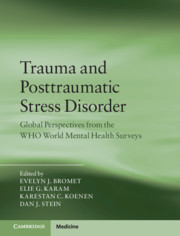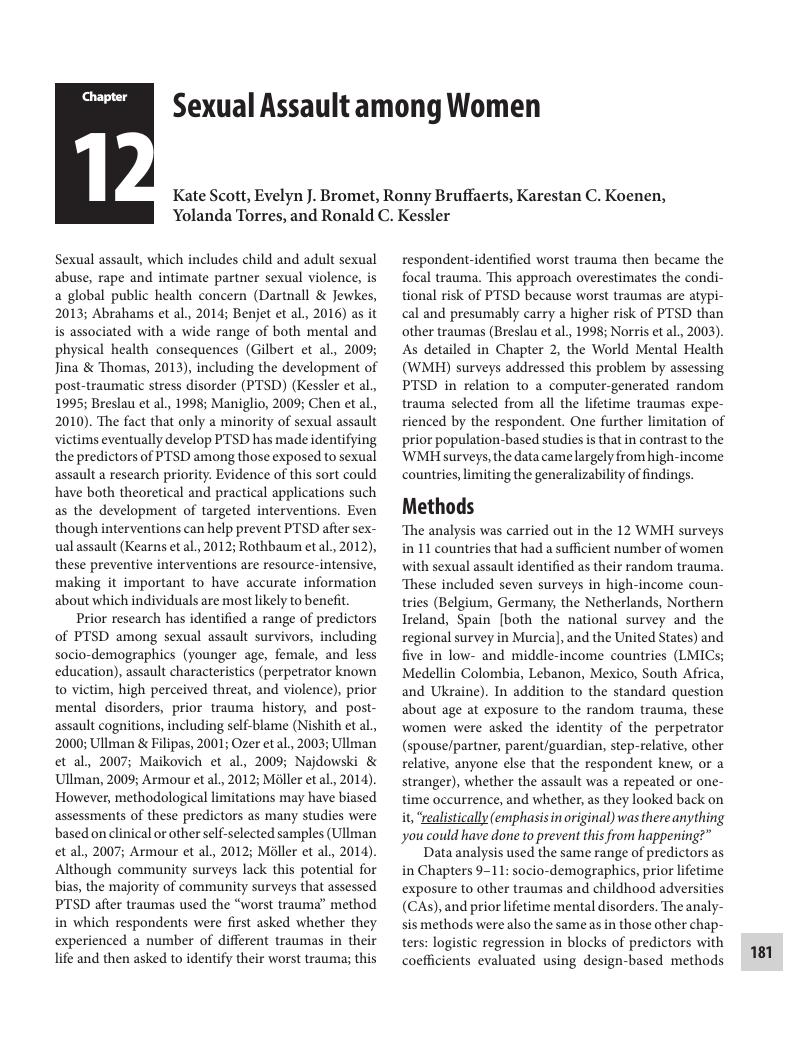 Trauma and Posttraumatic Stress Disorder
Trauma and Posttraumatic Stress Disorder Book contents
- Trauma and Posttraumatic Stress Disorder
- Trauma and Posttraumatic Stress Disorder
- Copyright page
- Contents
- Contributors
- Foreword
- Acknowledgments
- Section 1 Introduction
- Section 2 Epidemiology of Trauma Exposure
- Section 3 Epidemiology of Posttraumatic Stress Disorder
- Section 4 Factors Influencing the Onset and Course of Posttraumatic Stress Disorder
- Chapter 9 The Effects of Trauma Type, Timing, Accumulation, and Sequencing
- Chapter 10 The Effects of Childhood Adversities
- Chapter 11 The Effects of Prior Psychopathology
- Chapter 12 Sexual Assault among Women
- Chapter 13 Motor Vehicle Collisions
- Chapter 14 The Unexpected Death of a Loved One
- Chapter 15 Natural and Human-Made Disasters
- Chapter 16 Patterns and Predictors of the Course of Posttraumatic Stress Disorder
- Section 5 Dissecting the Clinical Picture
- Section 6 Conclusions and Future Directions
- Index
- References
Chapter 12 - Sexual Assault among Women
from Section 4 - Factors Influencing the Onset and Course of Posttraumatic Stress Disorder
Published online by Cambridge University Press: 26 July 2018
- Trauma and Posttraumatic Stress Disorder
- Trauma and Posttraumatic Stress Disorder
- Copyright page
- Contents
- Contributors
- Foreword
- Acknowledgments
- Section 1 Introduction
- Section 2 Epidemiology of Trauma Exposure
- Section 3 Epidemiology of Posttraumatic Stress Disorder
- Section 4 Factors Influencing the Onset and Course of Posttraumatic Stress Disorder
- Chapter 9 The Effects of Trauma Type, Timing, Accumulation, and Sequencing
- Chapter 10 The Effects of Childhood Adversities
- Chapter 11 The Effects of Prior Psychopathology
- Chapter 12 Sexual Assault among Women
- Chapter 13 Motor Vehicle Collisions
- Chapter 14 The Unexpected Death of a Loved One
- Chapter 15 Natural and Human-Made Disasters
- Chapter 16 Patterns and Predictors of the Course of Posttraumatic Stress Disorder
- Section 5 Dissecting the Clinical Picture
- Section 6 Conclusions and Future Directions
- Index
- References
Summary

- Type
- Chapter
- Information
- Trauma and Posttraumatic Stress DisorderGlobal Perspectives from the WHO World Mental Health Surveys, pp. 181 - 193Publisher: Cambridge University PressPrint publication year: 2018
